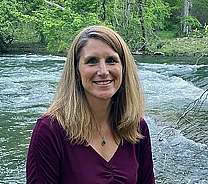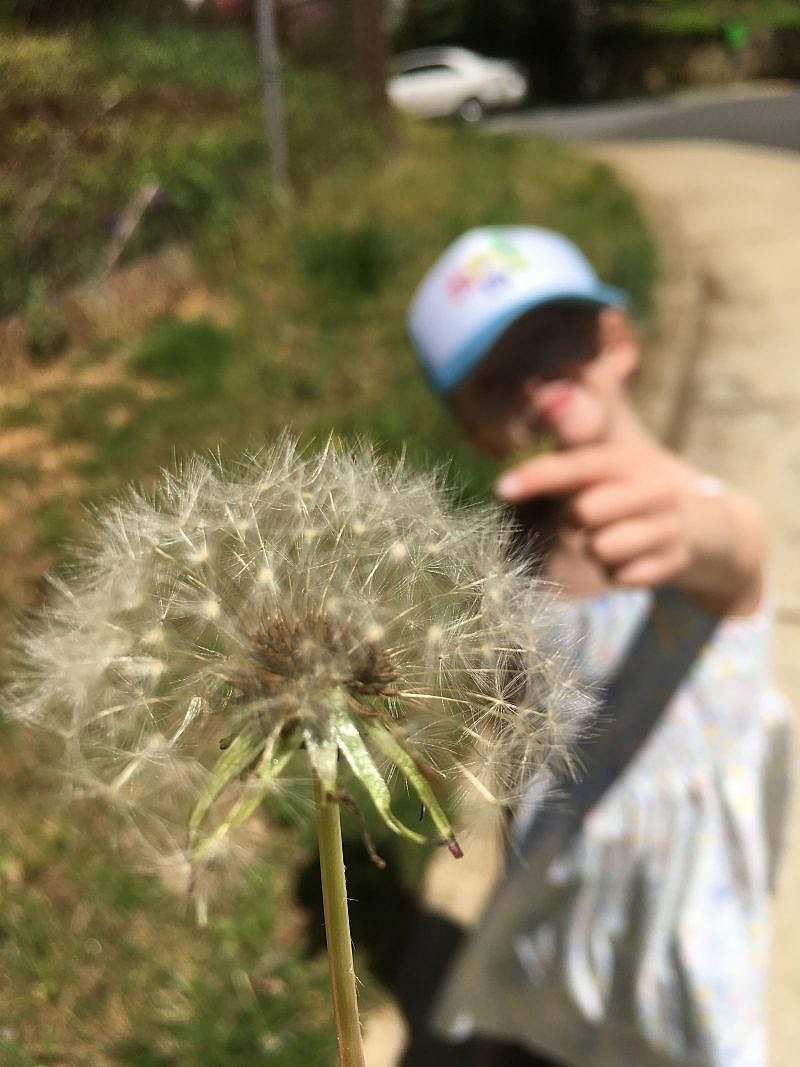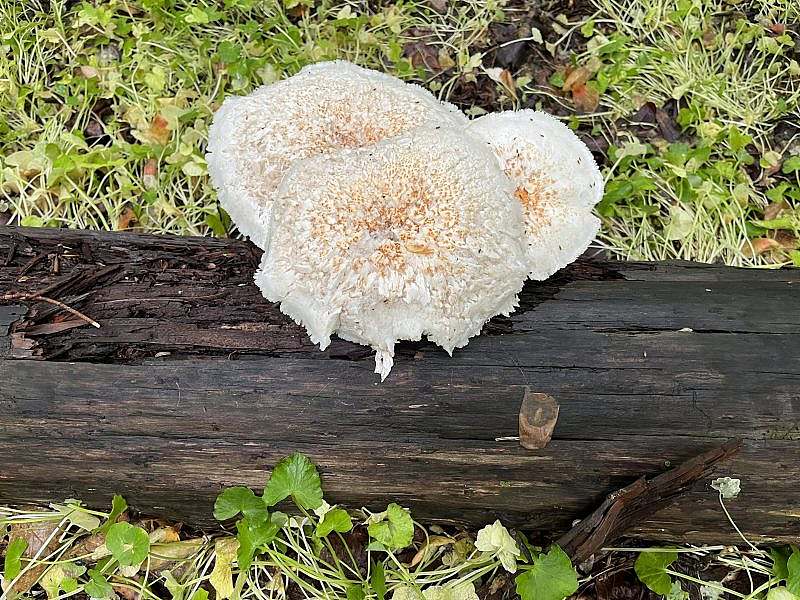How Time in Nature Boosts Our Mental Health
As hikers, we know that spending time outdoors not only improves our physical health but also positively impacts our overall mental well-being.
In a world where we are becoming increasingly screen-based and spend much of our lives inside, many people have drifted away from their connection to the natural world. Taking intentional actions to reconnect to the natural world can significantly improve our mental health.
We recently spoke with two nature informed therapists, Gina Strauss from the Center for Nature Informed Therapy and Sarah Boone, a Licensed Clinical Professional Counselor in private practice, to discuss why connecting with nature feels so good!

Gina Strauss is a Licensed Clinical Professional Counselor at Chesapeake Mental Health Collaborative and serves as Director of Programming and Outreach at the Center for Nature Informed Therapy. She works with children, teens, and adults in a wide variety of nature based settings.
Sarah Boone is a Licensed Clinical Professional Counselor and was in the second cohort of therapists trained by the Center for Nature Informed Therapy. Sarah practices in her Bethesda, Maryland office as well as in close-by Rock Creek Park. She sees adults and families and specializes in grief and transitions.

What Is Nature-Informed Therapy?
First, let’s share what Nature Informed Therapy (NIT) is! NIT combines therapeutic work with the healing power of nature. The goal is to support well-being through renewed connections with the natural world, as well as with ourselves and one another. The Center for Nature Informed Therapy (CNIT), where Gina Strauss works and Sarah Boone was trained, was founded in 2020 by Dr. Heidi Schreiber-Pan. CNIT is one of the world’s most well-known nature informed therapy training centers.
The Center offers training, retreats, and programs for mental health professionals, groups, and individuals. While it began with a focus on certification and mentorship for therapists, the organization has since expanded its offerings to serve a broader audience, reflecting the growing interest in nature informed therapy.

As many of you have experienced, one feels a certain calmness and centering when they spend time in nature. “Our DNA is designed to respond to natural sounds such as birdsong, the sound of water, wind through the trees,” explains Gina Strauss. “Those sounds are incredibly calming to our nervous system.”
It’s as if the sounds of the river or the feel of the wind on your face can unravel the threads of stress we are holding. But do you need to wait until your weekend hike or backpacking vacation to reap the benefits of a nature booster?
“You don’t have to come to a forest like this to have a nature-based experience,” Sarah Boone pointed out while walking through Rock Creek Park in Washington, D.C.. “You can look out a window in the midst of a lot of buildings and concrete and see the sky and begin to feel your body relax down.” Taking a few moments to stare at the trees can be soothing.
Boone explains, “If we look at it from a biological standpoint, there are so many ways our bodies are relaxed and regulated when we are in nature – our heart rate drops, our blood pressure goes down, our cortisol levels go down and our immune system is boosted. It’s really a natural anti-anxiety and antidepressant.” Some medical doctors, particularly in Canada, have even begun prescribing time in nature for stress reduction and healing.
Healing Happens in Small Moments of Noticing
You don’t need hours of free time or access to a remote wilderness to benefit from nature’s healing presence. Both Strauss and Boone emphasize the power of noticing. Spend a few minutes each day observing some of the natural elements around you—trees, sky, birds, or even a weed pushing through cement. “Even the little plant that grows up in the cracks in the sidewalk,” says Strauss. “There’s such a powerful metaphor there—resilience.” This simple exercise of noticing can help calm the nervous system and build a stronger connection to nature.

Strauss also encourages people to find their thread to nature—that unique element that resonates most with them. “Some people love sunsets, so they can be purposeful about sitting by a window or outside at sunset. Others like plants, so have that mindful connection with herbs when cooking.” This personal connection helps make nature part of your routine and can anchor you during stressful times.
Nature as Mirror, Metaphor, and Co-Therapist

Nature informed therapy often goes beyond just being in nature—it involves seeing nature as an active part of the healing process. “We are made of the same elements as nature,” Strauss says. “That makes metaphors incredibly powerful in therapy.” For example, clients might reflect on how they feel using themes of the seasons or types of weather, or echo their strength through the resilience of a weathered tree.
Both Boone and Strauss bring this to life with their clients working with objects in nature like seashells, leaves or pinecones in therapy sessions.
“Someone can choose a nature-based object…that’s reflective of something they’re learning, a challenge they’re having,” Boone explains. She also invites clients to recall specific imagery during their healing: “Do you remember that image of the tree and the rootedness of the tree? How does that relate to you right now? In this way, nature becomes both a mirror and a mentor.
Therapists themselves benefit from nature’s support, too. Strauss shares that, especially when holding space for clients’ grief or trauma, she feels supported by nature as a partner in therapy. “Nature is holding that space with me. It helps regulate my nervous system, too. I’m not the only one holding space.”
Especially when doing group therapy, the intensity of the emotions and the heaviness of the shared experiences can feel almost overwhelming in a small space, but when you take that group outside, nature seems to absorb some of the emotional weight. Boone echoed this as well, “When I’m outside with a client, nature can hold the bigness of the emotions.”
Bring Nature’s Lessons Into Our Lives
Both Strauss and Boone see reciprocity as a core pillar of our mental well-being. It is important that we not only spend time in nature, but also take time to care for the natural world around us. Whether picking up trash while you hike or caring for plants, we need to create a more reciprocal relationship with the earth. By doing so, we increase our ecological consciousness, which leads to a healthier life and a feeling of balance.
For those struggling with trauma, anxiety, or social isolation, nature can be a bridge toward human connection. “Caring for a plant or connecting with a tree can help people to heal attachment wounds,” says Strauss. “Once there’s a human-to-nature connection, you can build a bridge to human-to-human connections.” This simple, nonjudgmental bond can create a sense of belonging that many people feel is missing from their lives. By cultivating their relationship with nature, individuals can hone their skills of noticing, acceptance, and compassion. These experiences and lessons can be carried into their relationships with friends, neighbors, and family.
Boone emphasizes the power of group experiences in nature. “There’s nothing more powerful than group work in nature…we are tribal people. We want to be with our herd.” Whether doing a community trail cleanup, conquering those unending switchbacks with friends, or sharing a meal and conversation at the neighborhood picnic. “There’s an uninhibited experience that people feel—when in nature, they can be more fully themselves,” Boone explains.

Final Thoughts: Start local!
To deepen your connection with nature and support your mental health, start small and local. Notice the trees and plants in your neighborhood or the mushrooms growing in the woods nearby. Sit outside during lunch or take a walk after dinner. Start a small herb garden in your yard or on your windowsill. Bring a leaf or smooth rock indoors and take a few moments in the morning to focus your attention on it.
You don’t need perfect weather or long-distance thru-hikes to get your nature moments in. Nature is everywhere—and it’s waiting for you to slow down, notice, and find your thread.
For more fun hints inspired by our conversations with Sarah Boone and Gina Strauss, check out our Five Nature-Based Mental Health Boosters!
